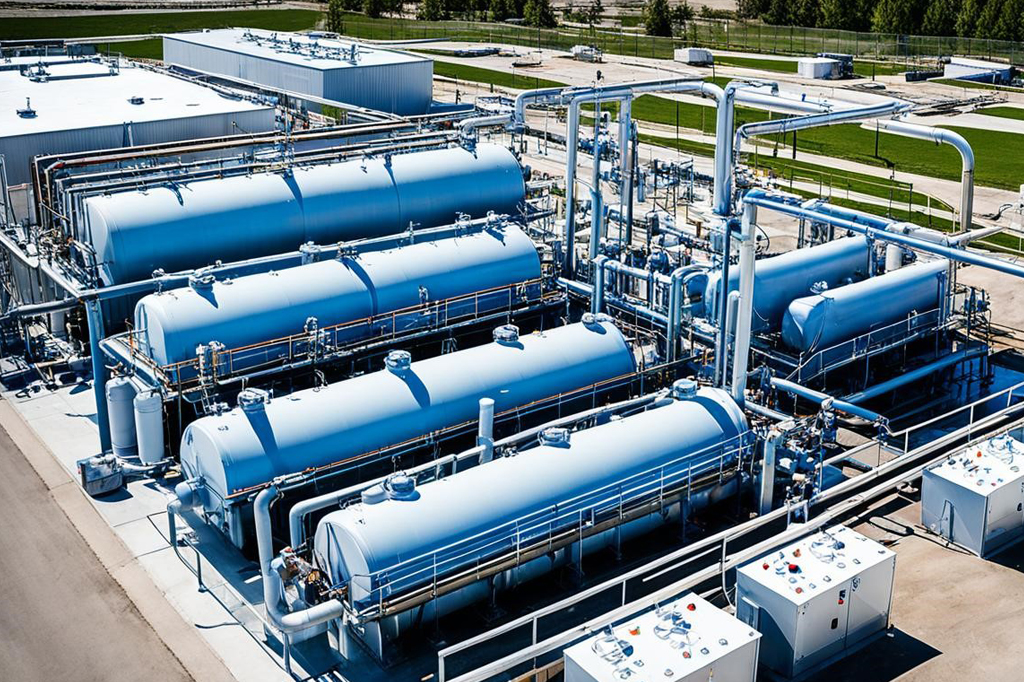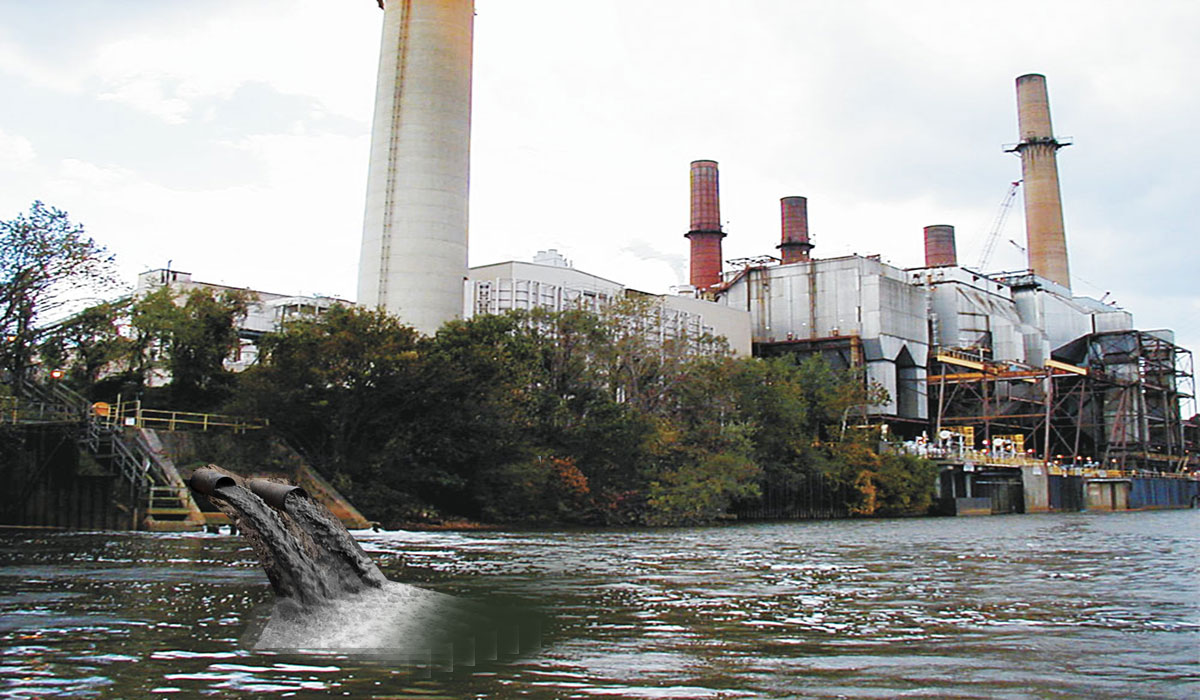Challenges and Solutions in Industrial Waste Water Therapy
The treatment of commercial wastewater provides a diverse range of challenges, varying from rigid regulative compliance to the intricacies of price monitoring and technical limitations. The variability in waste make-up additionally complicates the effectiveness of traditional therapy techniques, frequently resulting in escalated functional expenses.
Regulatory Compliance Challenges
Just how can commercial facilities browse the facility landscape of regulative conformity in wastewater therapy? The regulative framework regulating wastewater administration is multifaceted, usually differing by jurisdiction and sort of market. Facilities must abide by federal, state, and local regulations that determine effluent high quality standards, discharge limits, and surveillance demands. Failing to conform can cause serious penalties, including penalties and operational closures.
To successfully manage these compliance obstacles, centers ought to carry out durable monitoring and reporting systems that make sure real-time information collection and analysis. Routine audits and danger analyses can identify prospective conformity voids, enabling positive modifications in therapy procedures. Employee training programs focusing on regulative understanding and ideal techniques are vital to cultivate a society of compliance within the organization.
Additionally, engaging with governing companies can give important understandings and clear up unclear policies. Facilities might also take advantage of speaking with environmental professionals who focus on wastewater therapy compliance, making sure that they remain abreast of progressing laws. By adopting these methods, commercial facilities can not only fulfill conformity requirements however likewise boost their operational efficiency and ecological stewardship.
Price and Financial Barriers
Navigating regulative conformity in wastewater therapy often presents considerable monetary obstacles for commercial facilities. The costs connected with carrying out essential treatment technologies, maintaining compliance with strict guidelines, and taking care of functional expenditures can be discouraging. Many organizations face high initial capital investment for the building or upgrading of wastewater treatment plants, which may strain budgets, especially for small and medium-sized enterprises.
Additionally, continuous operational costs, including labor, maintenance, and chemical inputs, add to the monetary problem. The changability of changing energy prices and the potential need for additional investments to fulfill advancing laws aggravate these financial pressures. In many cases, the absence of monetary rewards or support from federal government bodies makes it much more challenging for businesses to warrant investments in advanced therapy systems.
Furthermore, the economic stability of wastewater therapy services is frequently examined, particularly for markets with tight earnings margins. It is critical for commercial facilities to check out cost-effective methods, such as adopting ingenious financing choices, involving in partnerships, and leveraging arising technologies that can assist minimize these economic obstacles while making certain compliance with ecological criteria.

Technological Limitations
Various technical limitations prevent the efficiency of commercial wastewater treatment procedures. One significant difficulty is the insufficiency of existing therapy modern technologies to address complicated contaminants.
In addition, the scalability of therapy modern technologies presents an obstacle. While some sophisticated approaches, like membrane filtering or innovative oxidation, show pledge in controlled atmospheres, their execution on a larger scale can be practically challenging and excessively pricey. Maintenance and operational complexities better complicate the adoption of these systems, particularly for smaller sized sectors with limited technical proficiency.
The combination of real-time surveillance modern technologies also stays insufficient in many treatment facilities. Without efficient tracking systems, drivers can not properly evaluate treatment effectiveness or identify potential failures, resulting in inconsistent effluent high quality. As a result, resolving these technical constraints via study and growth, along with financial investment imp source in innovative solutions, is essential for enhancing the efficacy of industrial wastewater therapy and ensuring governing conformity. Industrial Waste Water Treatment.
Variability in Waste Composition
In the realm of commercial wastewater therapy, the variability in waste composition offers a powerful difficulty. Industries generate wastewater with varied attributes, influenced by factors such as manufacturing procedures, basic materials, and operational techniques. This heterogeneity complicates the therapy process, as standard systems commonly have a hard time to effectively resolve the variety of toxins existing.
For instance, wastewater from food handling may have high degrees of organic issue, while effluents from chemical manufacturing can consist of hazardous materials and heavy steels. This variation requires versatile therapy methods to make certain conformity with environmental regulations and shield public health and wellness. In addition, fluctuations in waste my latest blog post make-up can occur gradually, influenced by modifications in manufacturing schedules, upkeep tasks, or the introduction of new items.

Ingenious Therapy Solutions
Innovative therapy solutions are necessary for dealing with the intricacies of commercial wastewater administration. Typical methods usually fall short in properly removing a large array of pollutants, specifically in centers with diverse effluent streams. Recent innovations concentrate on integrating innovative modern technologies to enhance treatment performance and sustainability.
One encouraging approach is the usage of innovative oxidation procedures (AOPs), which leverage effective oxidants to weaken natural pollutants. AOPs, including photocatalysis and ozonation, can substantially lower toxic substances and improve effluent high quality. Furthermore, membrane layer bioreactor (MBR) modern technology has gained traction, combining biological treatment with membrane filtering, leading to top notch effluent and lowered impact.
An additional cutting-edge solution is the implementation of resource recovery systems. Techniques like anaerobic digestion not just deal with wastewater yet additionally generate biogas, which can be used as a renewable energy resource. Moreover, the adoption of artificial knowledge and artificial intelligence models can optimize therapy procedures by forecasting variants in wastewater structure, thus enhancing functional performance.
These cutting-edge options not only address governing conformity but also advertise environmental sustainability, leading the way for a more efficient and resistant industrial ecosystem.
Verdict
In verdict, addressing the challenges of industrial wastewater treatment needs a complex strategy that integrates regulatory compliance, expense administration, and technical innovations. A dedication to continual improvement in treatment methodologies will eventually contribute to the efficient administration of industrial wastewater and environmental security.
The treatment of industrial wastewater presents a multifaceted range of difficulties, ranging from strict regulatory compliance to the intricacies of cost management and technological constraints. Industrial Waste Water Treatment.Browsing governing conformity in wastewater therapy commonly provides considerable financial challenges for commercial centers. Resolving these technical restrictions with research and development, along with financial investment in cutting-edge options, is crucial for improving the efficiency of commercial wastewater treatment and guaranteeing governing conformity
Wastewater treatment facilities must spend in robust monitoring systems and adaptable therapy innovations capable of suiting varying influent characteristics.In verdict, attending to the challenges of commercial wastewater check my site treatment requires a complex method that integrates regulative compliance, price administration, and technical improvements.
Comments on “Industrial Waste Water Treatment-- Cutting-Edge Technologies for Water Purification”